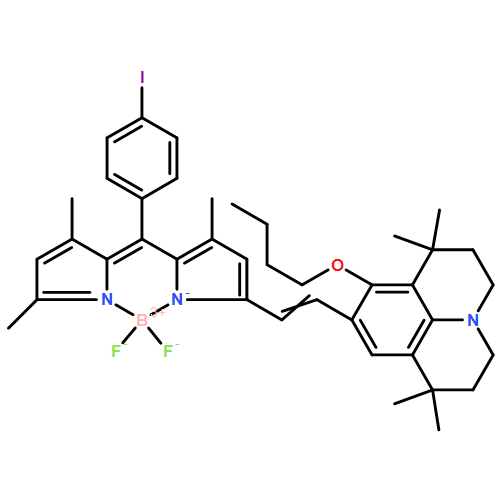Abstract
A small series of donor–acceptor molecular dyads has been synthesized and fully characterized. In each case, the acceptor is a dicyanovinyl unit and the donor is a boron dipyrromethene (BODIPY) dye equipped with a single styryl arm bearing a terminal amino group. In the absence of the acceptor, the BODIPY-based dyes are strongly fluorescent in the far-red region and the relaxed excited-singlet states possess significant charge-transfer character. As such, the emission maxima depend on both the solvent polarity and temperature. With the corresponding push–pull molecules, there is a low-energy charge-transfer state that can be observed by both absorption and emission spectroscopy. Here, charge-recombination fluorescence is weak and decays over a few hundred picoseconds or so to recover the ground state. Overall, these results permit evaluation of the factors affecting the probability of charge-recombination fluorescence in push–pull dyes. The photophysical studies are supported by cyclic voltammetry and DFT calculations.
